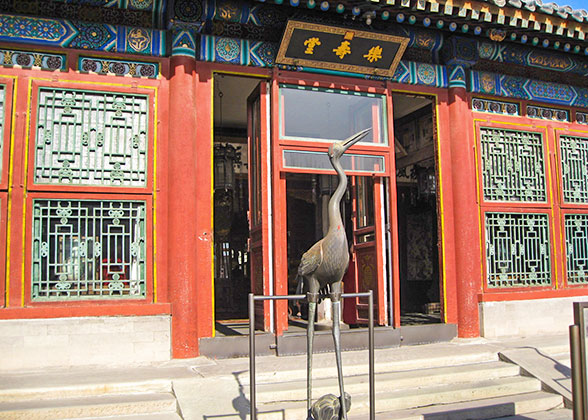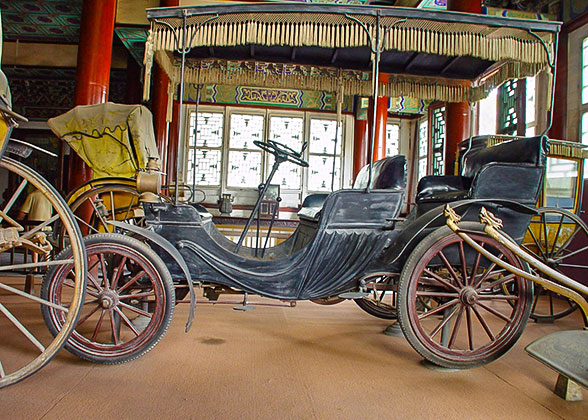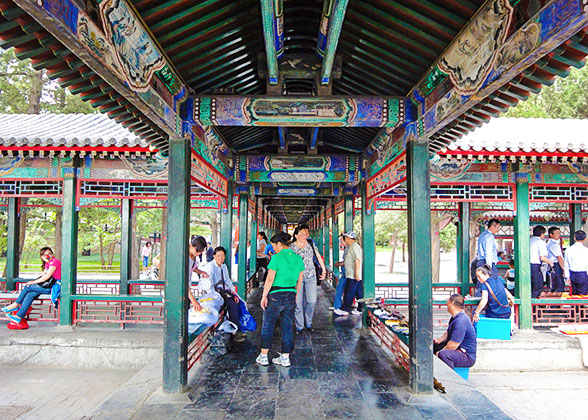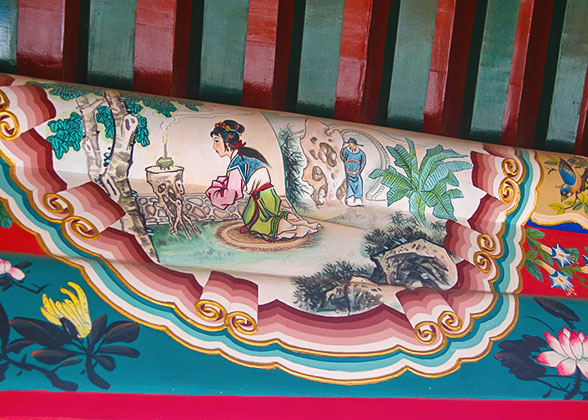Top 15 Summer Palace FAQs
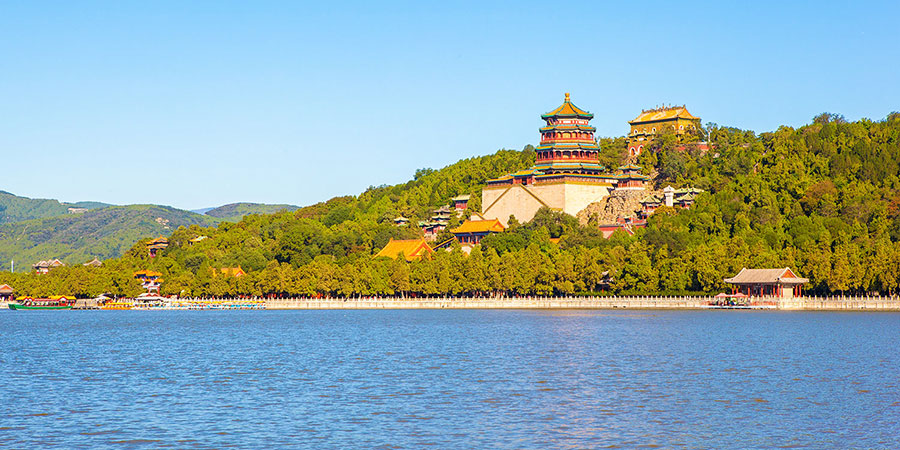 |
| Kunming Lake in Summer Palace |
![]() 1. What dynasty was the Summer Palace built in?
1. What dynasty was the Summer Palace built in?![]() It was first built in the year of 1750 in Qing Dynasty (1644 - 1911).
It was first built in the year of 1750 in Qing Dynasty (1644 - 1911).
![]() 2. Who built the Summer Palace? Why was the Summer Palace built?
2. Who built the Summer Palace? Why was the Summer Palace built?![]() Commissioned by Emperor Qianlong, the complex was originally built to celebrate the 60th birthday of his mother. It was repaired in 1902 as a temporary royal summer retreat after being destroyed by foreign invaders.
Commissioned by Emperor Qianlong, the complex was originally built to celebrate the 60th birthday of his mother. It was repaired in 1902 as a temporary royal summer retreat after being destroyed by foreign invaders.
![]() 3. Why is the Summer Palace important?
3. Why is the Summer Palace important?![]() It is one of the best examples of China's imperial gardens recording the royal family's life.
It is one of the best examples of China's imperial gardens recording the royal family's life.
![]() 4. How large is the Summer Palace?
4. How large is the Summer Palace?![]() The imperial garden covers an area of about 300.59 hectares (742.8 acres).
The imperial garden covers an area of about 300.59 hectares (742.8 acres).
![]() 5. Is Summer Palace in the Forbidden City?
5. Is Summer Palace in the Forbidden City?![]() No, they are separate attractions. Summer Palace is about 20 kilometers (12 miles) from the Forbidden City.
No, they are separate attractions. Summer Palace is about 20 kilometers (12 miles) from the Forbidden City.
![]() 6. How far is the Summer Palace from Beijing?
6. How far is the Summer Palace from Beijing?![]() Summer Palace is 15 kilometers (9 miles) from the downtown area.
Summer Palace is 15 kilometers (9 miles) from the downtown area.
![]() 7. How do I get to the Summer Palace?
7. How do I get to the Summer Palace?![]() Take subway line 4 to Beigongmen and take Exit D, then you arrive at the north gate of the palace. For more options, please click to see How to get to Summer Palace.
Take subway line 4 to Beigongmen and take Exit D, then you arrive at the north gate of the palace. For more options, please click to see How to get to Summer Palace.
![]() 8. How many parts of this imperial garden are open to the public?
8. How many parts of this imperial garden are open to the public?![]() The public areas consist of four major scenic areas:
The public areas consist of four major scenic areas:
Court Area, built in the same way as the Forbidden City, was designed for administrative functions. The principal buildings in this group are East Palace Gate, Hall of Benevolence and Longevity, Hall of Virtue and Harmony and Hall of Joyful Longevity.
Front-Hill Area, centering on Tower of Buddhist Incense, covers most attractions. This place is well-known for Buddhist worshiping, and exemplified in the Hall of Dispelling Clouds, Tower of Buddhist Incense, Hall of Utmost Blessing and other buildings.
Lake Area and Rear-Hill Area present an attractive view with all kind of picturesque scenery and architecture, such as Kunming Lake, Marble Boat and Seven-Arch Bridge in the Lake Area and Garden of Harmonious Interest, Four Great Regions and Suzhou Market Street in the Rear-Hill Area.
![]() 9. How long does it take to visit the whole garden?
9. How long does it take to visit the whole garden?![]() Generally, around 2.5 to 3 hours is sufficient. However, many visitors opt to stay half a day to get enough of the views at both the Old Summer Palace and the attached garden. Some may even need an entire day's outing. You may need to find your way in the labyrinth created by the gardener's landscaping craft. Also, you need to get there early in the day.
Generally, around 2.5 to 3 hours is sufficient. However, many visitors opt to stay half a day to get enough of the views at both the Old Summer Palace and the attached garden. Some may even need an entire day's outing. You may need to find your way in the labyrinth created by the gardener's landscaping craft. Also, you need to get there early in the day.
![]() 10. Is the garden open on national holidays and what are the opening hours?
10. Is the garden open on national holidays and what are the opening hours?![]() It is open even during the national holidays, including the Chinese New Year. However, it has its high season and the slack season: during the high season from April 1st to October 31st, it is open from 06:30 to 18:00; during the slack season from November 1st to March 31st in the next year, it is open from 07:00 to 17:00.
It is open even during the national holidays, including the Chinese New Year. However, it has its high season and the slack season: during the high season from April 1st to October 31st, it is open from 06:30 to 18:00; during the slack season from November 1st to March 31st in the next year, it is open from 07:00 to 17:00.
![]() 11. Where did the ancient emperors and their concubines reside?
11. Where did the ancient emperors and their concubines reside?![]() The imperial bedrooms of the Court Area fanned out from the Hall of Joyful Longevity. The Hall of Jade Ripples (Yulan Hall), Yiyun House and other several large scales of quadrangle dwellings form the household residences. Empress Dowager Cixi in her late years also lived there. Once upon a time the whole Court Area was for amusement purposes, but as the garden was rebuilt, the Hall of Jade Ripples became the bed chambers of the emperors. Since then, the Yiyun House had been used as the chambers of the empresses. And other consorts occupied lesser quarters. When Empress Dowager Cixi was in power, she lived in the Hall of Joyful Longevity.
The imperial bedrooms of the Court Area fanned out from the Hall of Joyful Longevity. The Hall of Jade Ripples (Yulan Hall), Yiyun House and other several large scales of quadrangle dwellings form the household residences. Empress Dowager Cixi in her late years also lived there. Once upon a time the whole Court Area was for amusement purposes, but as the garden was rebuilt, the Hall of Jade Ripples became the bed chambers of the emperors. Since then, the Yiyun House had been used as the chambers of the empresses. And other consorts occupied lesser quarters. When Empress Dowager Cixi was in power, she lived in the Hall of Joyful Longevity.
|
|
![]() 12. How did Empress Dowager Cixi spend her time in the Summer Palace?
12. How did Empress Dowager Cixi spend her time in the Summer Palace?![]() According to historical records, she usually got up early in the morning. After washing, she ate a rich breakfast and read the memorials. Then she handled affairs of the state with the court ministers in the Hall of Benevolence and Longevity, and as was her custom, behind a curtain so that her power then was called “Reign behind a Curtain.” Afterward, it was time for a 100-course lunch, followed by a long walk. She would usually go to Long Gallery and Kunming Lake for her walking exercise. She then went to the Hall of Joyful Longevity for a noon nap uninterrupted until she woke herself up. She and her entourage would then proceed to the Garden of Virtue and Harmony (Dehe Garden) to watch the Chinese operas or perhaps she could spend time painting. Dinner time again, and she plowed through about another 100-course meal tested poison free by her favorite eunuch, who acted like a canary bird by tasting everything first. After the dinner, she went to the Hall of Benevolence and Longevity to practice Chinese calligraphy, then light dessert. Sometimes she played the lantern riddles with the ministers of the imperial infirmary.
According to historical records, she usually got up early in the morning. After washing, she ate a rich breakfast and read the memorials. Then she handled affairs of the state with the court ministers in the Hall of Benevolence and Longevity, and as was her custom, behind a curtain so that her power then was called “Reign behind a Curtain.” Afterward, it was time for a 100-course lunch, followed by a long walk. She would usually go to Long Gallery and Kunming Lake for her walking exercise. She then went to the Hall of Joyful Longevity for a noon nap uninterrupted until she woke herself up. She and her entourage would then proceed to the Garden of Virtue and Harmony (Dehe Garden) to watch the Chinese operas or perhaps she could spend time painting. Dinner time again, and she plowed through about another 100-course meal tested poison free by her favorite eunuch, who acted like a canary bird by tasting everything first. After the dinner, she went to the Hall of Benevolence and Longevity to practice Chinese calligraphy, then light dessert. Sometimes she played the lantern riddles with the ministers of the imperial infirmary.
![]() 13. What are the features and functions of the Long Gallery?
13. What are the features and functions of the Long Gallery?![]() Long gallery reflects the architectural features of the Ming Dynasty and the Qing Dynasty. It is an annex or corridor to link the main architectures. But the Long Galley is much more than a linkage. As the longest corridor in the world, it is about 728 m (about 2,388 ft) long, winding and twisting on its path through different scenic terrains. You find the highlights at the Beauty-Left Pavilion (Liujia Pavilion), Strange Ripples Pavilion (Qilan Pavilion), Autumn Water Pavilion (Qiushui Pavilion) and Clear and Remote Pavilion (Qingyao Pavilion). The pillars of the corridor are bedecked with paintings similar to allegory tales on the walls of Western churches.
Long gallery reflects the architectural features of the Ming Dynasty and the Qing Dynasty. It is an annex or corridor to link the main architectures. But the Long Galley is much more than a linkage. As the longest corridor in the world, it is about 728 m (about 2,388 ft) long, winding and twisting on its path through different scenic terrains. You find the highlights at the Beauty-Left Pavilion (Liujia Pavilion), Strange Ripples Pavilion (Qilan Pavilion), Autumn Water Pavilion (Qiushui Pavilion) and Clear and Remote Pavilion (Qingyao Pavilion). The pillars of the corridor are bedecked with paintings similar to allegory tales on the walls of Western churches.
|
|
![]() 14. I find all kinds of stories depicted on the pillars of the Long Gallery in the color-paintings. What are they?
14. I find all kinds of stories depicted on the pillars of the Long Gallery in the color-paintings. What are they?![]() These allegories are related to mountains and forest, flowers and birds, natural scenery and human beings, as well as some historical legends. For example, Peach Garden Oath tells that Liu Bei, Guan Yu and Zhang Fei during the Three Kingdom Period (220 - 280) swore their oath in a peach garden. Tattooing by Yue Fei’ Mother shows that Yue Fei, a famous general in the Southern Song Dynasty (960 - 1127), was tattooed four characters – Jing Zhong Bao Guo (to try hard and attribute all to save the country) on his back by his mother. Yue earned his spurs by fighting the invaders to a standstill. The Milky Way Meeting tells a tragic love story of the Cowherd and the Weaving Maid. The Weaving Maid is forever busy producing the clouds which separate heaven from earth on her weaving machine. When in love, the Weaving Maid left her post and the clouds thinned out appreciably. The Jade Heavenly Emperor, who ruled the heaven, decreed that the two lovers could only meet once a year on the Milky Way, on the Seventh Day of the Seventh Moon as penalty for the dereliction of her duty.
These allegories are related to mountains and forest, flowers and birds, natural scenery and human beings, as well as some historical legends. For example, Peach Garden Oath tells that Liu Bei, Guan Yu and Zhang Fei during the Three Kingdom Period (220 - 280) swore their oath in a peach garden. Tattooing by Yue Fei’ Mother shows that Yue Fei, a famous general in the Southern Song Dynasty (960 - 1127), was tattooed four characters – Jing Zhong Bao Guo (to try hard and attribute all to save the country) on his back by his mother. Yue earned his spurs by fighting the invaders to a standstill. The Milky Way Meeting tells a tragic love story of the Cowherd and the Weaving Maid. The Weaving Maid is forever busy producing the clouds which separate heaven from earth on her weaving machine. When in love, the Weaving Maid left her post and the clouds thinned out appreciably. The Jade Heavenly Emperor, who ruled the heaven, decreed that the two lovers could only meet once a year on the Milky Way, on the Seventh Day of the Seventh Moon as penalty for the dereliction of her duty.
![]() 15. How come such a wonderful Marble Boat was built here?
15. How come such a wonderful Marble Boat was built here?![]() The Marble Boat, or Qingyan Boat, was first built in 1755 and restored by Empress Dowager Cixi in 1893. The purpose remains a mystery. But a popular myth states that it symbolizes that the regime is rock solid as marble. However, many people think that Empress Dowager Cixi rebuilt the Marble Boat just for enjoyment and entertainment.
The Marble Boat, or Qingyan Boat, was first built in 1755 and restored by Empress Dowager Cixi in 1893. The purpose remains a mystery. But a popular myth states that it symbolizes that the regime is rock solid as marble. However, many people think that Empress Dowager Cixi rebuilt the Marble Boat just for enjoyment and entertainment.
